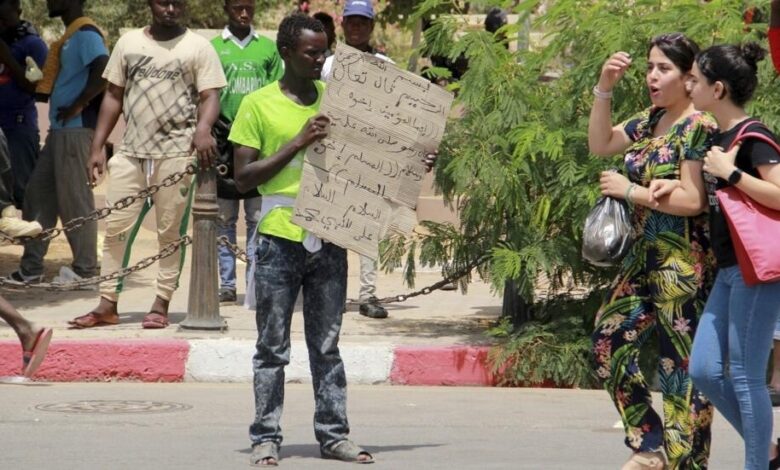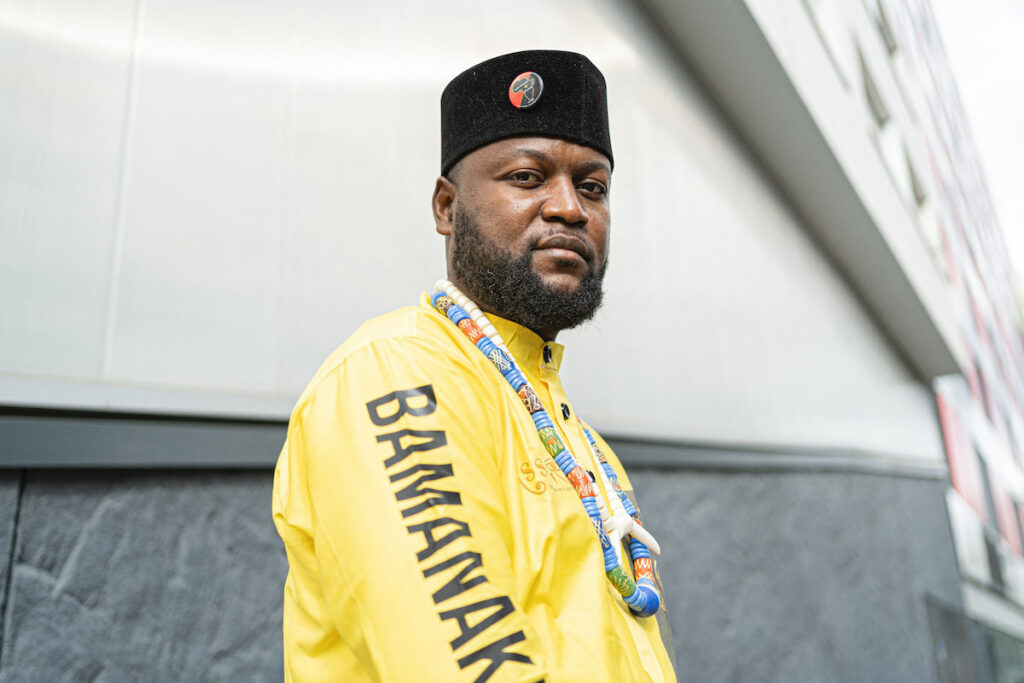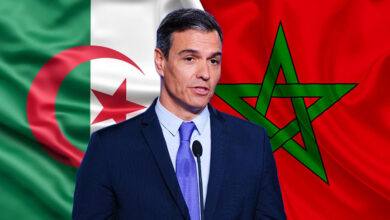Sfax is not Lampedusa

Updated on July 14, 2023:
Tunisia has joined the list of Mediterranean countries grappling with the ongoing global crisis of irregular migration. South-South migration exists and has been, for many decades, part of the South-North trajectory. But over the last few years, with tens of thousands of Sub-Saharan migrants staying for longer periods than usual and even settling in Tunisia, a country already caught in a decade-long economic crisis of its own, instead of using it as a crossing point towards Europe, the North African country has had to handle a crisis familiar yet alien to its people.
Sfax, The center of the crisis:
Tunisia has rarely found itself grappling with a crisis of immigration of such a great magnitude though it has been part of the immigration course as a station of departure from Africa to Europe. Yet, recently Tunisians have started to witness scenes they had long associated with TV reports from the Italian coasts.
Sfax, 270 km south of Tunis, is Tunisia’s second largest city and the center of the country’s migration crisis. As an industrial hub, Sfax has attracted tens of thousands of internal migrants for decades but recently it has attracted thousands of Sub-Saharan migrants. The pull factors for these migrants are the city’s need for workers and its maritime traditions that favour the activities of smugglers of irregular migrants.
Known for the commercial traditions of its people, Sfax has distinguished itself as a dynamic city of investors which is in need for workers. After the 2011 events and the exodus of many of the country’s youth to Europe, Tunisia has suffered from a workforce shortage. These migrants found in Sfax a place where they could make ends meet as they were employed in construction work, restaurants, and agriculture.
Northern Tunis:
Sfax is not the only Tunisian city that has received many Sub-Saharan migrants. In the northern suburbs of the capital Tunis, especially in the city of Ariana, sightings of Sub-Saharan workers and university students are common.
Unlike Sfax, Ariana has been home for Sub-Saharan migration for so many decades. Tunisian universities attract many Sub-Saharan students from middle class families in Francophone West Africa. The Metro number 2 in the capital, which runs from downtown Tunis to Ariana, has always transported almost as many Tunisian as Sub-Saharan students. The city has rarely recorded migration-related incidents until recently when the city’s Sub-Saharan population tripled.
The local population:
The stay of these immigrants in the city longer than usual has brought about recurrent skirmishes that amounted to clashes with some locals. The latter have been complaining the new residents have been leading a lifestyle that interferes with theirs. Details of these complaints show the extent to which Tunisia has been unprepared to handle the longer than expected stay of the new arrivals. Noise, drug-dealing, prostitution, lack of hygiene, inter-migrant violence, chaotic markets, and pick-pocketing have been the main complaints of the local population.
The truth is that a large section of the population and of the migrants alike have not found channels of effective communication especially in a homogeneous society like that of Tunisia where most foreigners walking down the street are either tourists or foreign students.
Controlling this continuous influx of migrants is a challenging task and so is the task of accommodating them. Uncontrolled migration brings with it fears as to the identity and the intentions of the newcomers.
Lacking the means to accommodate these migrants, Tunisia leaves it to them to get by. The job market in the country is too exhausted to give any more opportunities to low-skilled migrants. With lack of government regulation and supervision, many of these immigrants end up crammed in crowded slums or illegally rented crowded houses in poor neighbourhoods where the locals are likely to view them as competitors.
An expected déjà-vu:
For many years, experts and commentators have called on the different governments to address this issue before it is too late. The parallels between the immigration crises in Tunisia and Europe are many. Europe needed migrants in the post-WWII period to make up for a workforce shortage, and therefore, it opened its arms to foreign workers from former colonies in Africa. After Europe had enough workers, it closed its borders, which resulted in the actual crisis of irregular migration.
In the post-2011 period, Tunisia needed to respond to a low-skilled workforce shortage exacerbated by the exodus of many young people into Europe and the reluctance of remaining youths to do certain jobs. Unlike Europe, Tunisia did not look at foreign workers as a solution. But they came anyway.
Like in many migration narratives, when numbers start to grow, causing a discrepancy between offer and demand for work, problems will be waiting around the corner.
The straw that broke the camel’s back:
The nights of late June and early July saw the skirmishes grow into conflicts between locals and migrants in some of Sfax’s neighbourhoods. On July 3, 2023, a young Tunisian was stabbed to death by a Sub-Saharan immigrant.
Khalil Rekik, commentator on IFM, said on this radio station that the victim had nothing to do with the riots. He explained that the clash that resulted in the death of the young man was the third in a series of confrontations and took place in an industrial area called “Haffara.” This time, he explained, the violence started with the refusal of Sub-Saharan immigrants to abandon a house they had rented. He identified the victim as 38-year-old Nizar Amri.
He wondered why the government had not acted for a week of clashes between locals and migrants prior to the murder.
A mobilization against Racism:
Fears of racial tension urged many civil society groups and activists to take action before it is too late. In Sfax, after tension abated, people gathered in the city center to distribute food and water among some displaced Sub-Saharan migrants. Videos of similar initiatives in Tunis and in Southern Tunisia went viral after the clashes.
Calls on people not to fall into the trap of racial violence circulated widely on the social media. In a joint statement, several local human rights groups called for an anti-racist march on July 14, 2023.
How they came:
Sub-Saharan migrants need to walk for thousands of kilometres from West and Central Africa into Algeria and Libya and later into Tunisia. North-Western Tunisia is a major crossing point from Algeria.
Drivers in North and Central Western Tunisia are familiar with trails of Sub-Saharan migrants walking on the sides of the road towards the country’s coastal cities.
Those who come from Libya face tougher difficulties as the lack of a strong central government allows criminal militias and gangs to flourish. The Libyan border has seen a growing influx of immigrants favoured by the war in Sudan. Videos of Sudanese migrants complaining of mistreatment in Libya have gone viral.
A recent book on immigration in the Maghreb and the Mediterranean points out that out of 20000 migrants from Ivory Coast, 15000 live in Tunisia illegally. Unlike other Sub-Saharan migrants, those who come from Ivory Coast enter Tunisia legally but they remain in the country after the expiry of their stay.
Tunisia’s policy:
Tunisia’s migration policy has always been characterized by much improvisation. Despite earlier warnings launched by experts to the government to act before it is too late, the issue of mass migration was not put on the table of decision-makers until clashes broke out.
Like Tunisia’s blurry policy, which has been more reactive than strategic, President Saied’s discourse has been swinging between the affirmation that Tunisia will not turn into a guard for the European borders nor will it accept the repatriation of foreigners on its soil, on the one hand, and the rejection of claims that Sub-Saharan migrants suffer from systemic mistreatment by the Tunisian authorities, on the other.
Walid Tlili writes in a recent article published in Al-Araby that this improvisation “has worsened the plight of migrants and Tunisians alike,” pointing to the contradiction in the President’s speech on Saturday where he said that “Tunisia is not a furnished apartment” and affirmed that these migrants were protected at the same time.
Earlier in February, President Saied said that there are attempts at changing the demographic makeup of Tunisia. Even though the president’s words were condemned in many Western circles, many Tunisians found in some videos that circulated prior to this speech a justification for the president’s stance.
In these videos, some Sub-Saharans seemed to repeat in a mantra-like manner the slogan “Africa is Black.” Mwazulu Diyabanza, a Congolese pan-African political activist, is seen in a Tunisian airport repeating the same mantra while Tunisian police officers try to detain him.

After an international condemnation of the president’s statements, he reappeared in early March to call on the local authorities to take the needed measures to assist these immigrants during their stay in the country.
In early June, President Saied visited the city of Sfax where he met with a crowd of immigrants and locals. In a video posted to Facebook, the president seemed to hold in his arms a little kid born to Sub-Saharan parents while talking to two migrants. In the background, a Tunisian man is heard yelling, “Please, Mr. President, rid us of Africans.” The president replied by saying, “no, they are our brothers and sisters, but they must stay here legally.”
Worried of another immigration crisis on European soil, Italy’s Prime Minister Giorgia Meloni has been rallying support for Tunisia in its talks with the IMF. Her efforts included two visits to the North African country. In the second visit, she was accompanied by the President of the European Commission, Ursula von der Leyen, and the Prime Minister of the Kingdom of the Netherlands, Mark Rutte, a move which would further promote the image Meloni wants to draw of Italy as a bridge between the South and the North Mediterranean. Yet, to some analysts in Tunis, Meloni’s efforts are a clear indication of her aim to turn Tunisia into a first line in her war against irregular immigration.
In his article, Walid tlili argues that what neither Saied nor Giorgia Meloni would dare to reveal are the details of their agreement and the price each party would get.
After the murder of a Tunisian man this July, the Tunisian authorities started a large security campaign in the city of Sfax in search of undocumented migrants, many of whom were repatriated towards the Libyan border, according to Aljazeera reports.
According to BBC Arabic, these migrants are in a critical humanitarian situation with no means to get by under unbearable heat.
Human Rights Watch called on the Tunisian authorities to cease the collective expulsion of these migrants and to grant them access to humanitarian aid. President Saied responded by affirming that Sub-Saharan migrants are treated in a humane manner, denying any systemic violations of their human rights.
Sfax is not Lampedusa:
Europe has often urged Tunisia to play a more active role to deter irregular migrants from raching the European soil yet did little to assist the North African country in its migration crisis. This stance has fuelled theories that the EU wants to turn Tunisia into a land of repatriation of unwanted immigrants and asylum seekers.
President Saied has often said that the migration crisis cannot be solved unilaterally and that, as a global issue, it needs to be addressed globally according to a plan by which all concerned parties should abide.
A comprehensive agreement should not make weaker states bear the bulk of the crisis in return for insignificant grants and investment promises wrapped in a cloak of conditionality. Repatriation of migrants into foreign countries is unacceptable morally and ethically. It has been tried in other parts of the world but it may not work in the Mediterranean.
Tunisia’s cooperation with Europe on the immigration issue cannot be synonymous with the North African country turning into a land where migrants and asylum seekers are repatriated. In other words, Sfax cannot become an alternative Lampedusa.
Tunisia should invest further in the African continent but at the moment, it has little to offer to Sub-Saharan migrants. It does not have the means to accommodate these migrants and to integrate them in its economic and social fabric. It is unexperienced in terms of large-scale migration crises. Its exerience with large-scale refugee influx is limited to two episodes: the Algerian war of independence (1954-1962) and the 2011 Libyan Civil War, which played a role in the actual crisis.
Chasing migrants out of the cities is not a viable solution as it plays in the hands of those who want to defamate Tunisia, a country unexperienced in large-scale migration crises. If Europe is willing to help, it needs to provide Tunisia with assistance in this crisis.
Besides, Lampedusa is part of Italy, which is part of a well-integrated bloc where migration is regulated through laws and policies in such a way as to allow the EU member states to respond together to this phenomenon. The Southern bank of the Mediterranean, on the other hand, is neither well-integrated nor does it have a clear migration policy.
Lack of integration and coordination between states in North Africa makes mobility difficult for the nationals of these states, not to mention foreigners. This means that if Tunisia is not assisted by the EU, its neighbours, and the concerned Sub-Saharan states, all the migrants will have to stay in the North African country. As for Italy, it does not accommodate all the migrants who arrive on Italian soil. Migrants from Francophone Africa, for example, tend to continue their journey to France and elsewhere in Europe.
The world is changing and so is the Mediterranean:
A solution to this issue should rather address the root causes lying in asymmetries between the North and the South Mediterranean, especially at a time when economic interdependence between the two banks of the Mediterranean is growing due to the energy crisis. The economic turn towards the South Mediterranean, in particular, and the Global South, in general, should rest on new modalities of win-win cooperation.
Mohsen Hrizi is Professeur agrégé at the Faculty of Letters, Arts, and Humanities, La Manouba, Tunisia, PhD candidate at the same faculty, founder of The Mediterranean Perspective, and scholar interested in political discourse, media studies, international relations, and Hispanic and romance studies.


Hi! Just wondering- what template did you use for your website? I want to use it on my blog at https://similar.my.id